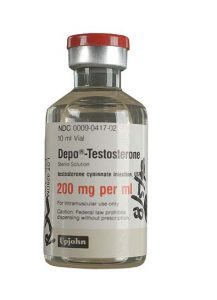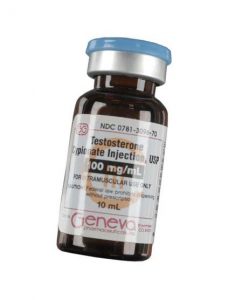3.12 Steroids
What are steroids?
Substances known as anabolic steroids are synthetic versions of testosterone and created in laboratories. They are used for muscle growth and are used primarily in animal farming. Steroids are used in humans to address issues like delayed growth and can also be used to treat physical illness like wasting.[1] Using steroids by athletes has been shown to promote muscle growth, enhance athletic or other physical performance, and improve physical appearance, and has been banned in many professional and non-professional sports. Testosterone, nandrolone, stanozolol, methandienone, and boldenone are some of the most frequently abused anabolic steroids.
Watch the video Anabolic Steroids: Friend or Foe?[2]
What is their origin?
Testosterone was isolated by scientists in the 1930s. It was used to treat delayed puberty, particularly in males.[3] Anabolic steroids are currently manufactured by pharmaceutical companies and they are available legally only by prescription.
What do they look like?
Steroids are available in tablets and capsules, sublingual-tablets, liquid drops, gels, creams, transdermal patches, subdermal implant pellets, and water-based and oil-based injectable solutions. The appearance of these products varies depending on the type and manufacturer.


How are they administered?
Anabolic steroids come in the form of tablets, capsules, a solution for injection and a cream or gel to rub into the skin. Weightlifters and bodybuilders who use steroids often take doses that are up to 100 times greater than those used to treat medical conditions.[4]
What is their effect on the mind?
Case studies and scientific research indicate that high doses of anabolic steroids may cause mood and behavioral effects. In some individuals, steroid use can cause dramatic mood swings, increased feelings of hostility, impaired judgment, and increased levels of aggression (often referred to as roid rage). When people stop taking steroids, they may experience severe depression. Anabolic steroid use may develop into a psychological dependence.
What is their effect on the body?
A wide range of adverse effects is associated with the misuse of anabolic steroids. These effects depend on several factors including age, sex, the anabolic steroid used, amount used, and duration of use. In adolescents, anabolic steroid use can stunt the ultimate height that an individual achieves. In boys, steroid use can cause early sexual development, acne, and stunted growth. In adolescent girls and women, anabolic steroid use can induce permanent physical changes, such as deepening of the voice, increased facial and body hair growth, menstrual irregularities, male pattern baldness, and lengthening of the clitoris. In men, anabolic steroid use can cause shrinkage of the testicles, reduced sperm count, enlargement of the male breast tissue, sterility, and an increased risk of prostate cancer.
In both men and women, anabolic steroid use can cause high cholesterol levels, which may increase the risk of coronary artery disease, strokes, and heart attacks. Anabolic steroid use can also cause acne and fluid retention. Oral preparations of anabolic steroids, in particular, can damage the liver. People who inject steroids run the risk of contracting various infections due to non-sterile injection techniques, sharing of contaminated needles, and the use of steroid preparations manufactured in non-sterile environments. All these factors put users at risk for contracting viruses such as HIV or hepatitis B and C, and bacterial infections at the site of injection. People who inject steroids may also develop endocarditis, a bacterial infection that causes a potentially fatal inflammation of the heart lining.
What is their legal status in Canada?
Anabolic steroids are Schedule III substances under the CDSA.
Steroids and Transgender communities
There are questions about steroid usage amongst people who identify as transgender. “Many transgender men and women seek hormone therapy as part of the transition process”[5]; however anabolic steroids are NOT used in hormone therapy in Canada. For more information on steroids in transgender communities please visit World Professional Organization for Transgender Health.[6]
Now that you have explored the many categories of substances and examples, check your learning with this quiz.
- Centre for Addiction and Mental Health. (2021). Steroids. https://www.camh.ca/en/health-info/mental-illness-and-addiction-index/steroids ↵
- Demystifying Medicine. (2018, April 2). Anabolic steroids: Friend or foe? [Video]. Youtube. https://www.youtube.com/watch?v=XBM6gj7KHPA ↵
- Honders, C., & Roleff, T. L. (2016). Steroids and other performance-enhancing drugs. Greenhaven Publishing LLC. http://ebookcentral.proquest.com/lib/stfx/detail.action?docID=5430771 ↵
- Centre for Addiction and Mental Health. (2021). Steroids. https://www.camh.ca/en/health-info/mental-illness-and-addiction-index/steroids ↵
- Unger C. A. (2016). Hormone therapy for transgender patients. Translational Andrology and Urology, 5(6), 877–884. https://doi.org/10.21037/tau.2016.09.04 ↵
- World Professional Organization For Transgender Health. (2021). About. https://www.wpath.org/ ↵

